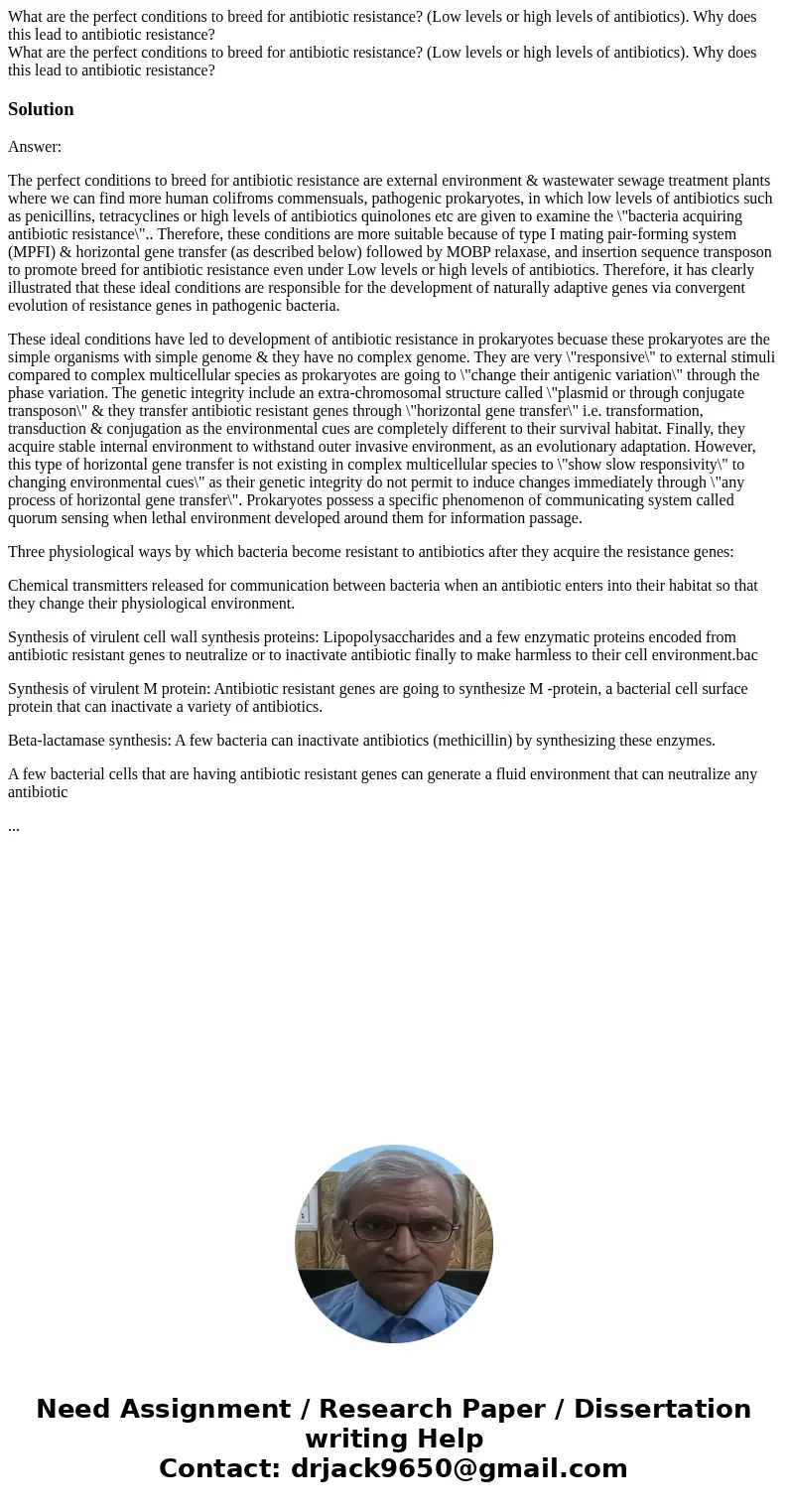What are the perfect conditions to breed for antibiotic resi
Solution
Answer:
The perfect conditions to breed for antibiotic resistance are external environment & wastewater sewage treatment plants where we can find more human colifroms commensuals, pathogenic prokaryotes, in which low levels of antibiotics such as penicillins, tetracyclines or high levels of antibiotics quinolones etc are given to examine the \"bacteria acquiring antibiotic resistance\".. Therefore, these conditions are more suitable because of type I mating pair-forming system (MPFI) & horizontal gene transfer (as described below) followed by MOBP relaxase, and insertion sequence transposon to promote breed for antibiotic resistance even under Low levels or high levels of antibiotics. Therefore, it has clearly illustrated that these ideal conditions are responsible for the development of naturally adaptive genes via convergent evolution of resistance genes in pathogenic bacteria.
These ideal conditions have led to development of antibiotic resistance in prokaryotes becuase these prokaryotes are the simple organisms with simple genome & they have no complex genome. They are very \"responsive\" to external stimuli compared to complex multicellular species as prokaryotes are going to \"change their antigenic variation\" through the phase variation. The genetic integrity include an extra-chromosomal structure called \"plasmid or through conjugate transposon\" & they transfer antibiotic resistant genes through \"horizontal gene transfer\" i.e. transformation, transduction & conjugation as the environmental cues are completely different to their survival habitat. Finally, they acquire stable internal environment to withstand outer invasive environment, as an evolutionary adaptation. However, this type of horizontal gene transfer is not existing in complex multicellular species to \"show slow responsivity\" to changing environmental cues\" as their genetic integrity do not permit to induce changes immediately through \"any process of horizontal gene transfer\". Prokaryotes possess a specific phenomenon of communicating system called quorum sensing when lethal environment developed around them for information passage.
Three physiological ways by which bacteria become resistant to antibiotics after they acquire the resistance genes:
Chemical transmitters released for communication between bacteria when an antibiotic enters into their habitat so that they change their physiological environment.
Synthesis of virulent cell wall synthesis proteins: Lipopolysaccharides and a few enzymatic proteins encoded from antibiotic resistant genes to neutralize or to inactivate antibiotic finally to make harmless to their cell environment.bac
Synthesis of virulent M protein: Antibiotic resistant genes are going to synthesize M -protein, a bacterial cell surface protein that can inactivate a variety of antibiotics.
Beta-lactamase synthesis: A few bacteria can inactivate antibiotics (methicillin) by synthesizing these enzymes.
A few bacterial cells that are having antibiotic resistant genes can generate a fluid environment that can neutralize any antibiotic
...

 Homework Sourse
Homework Sourse